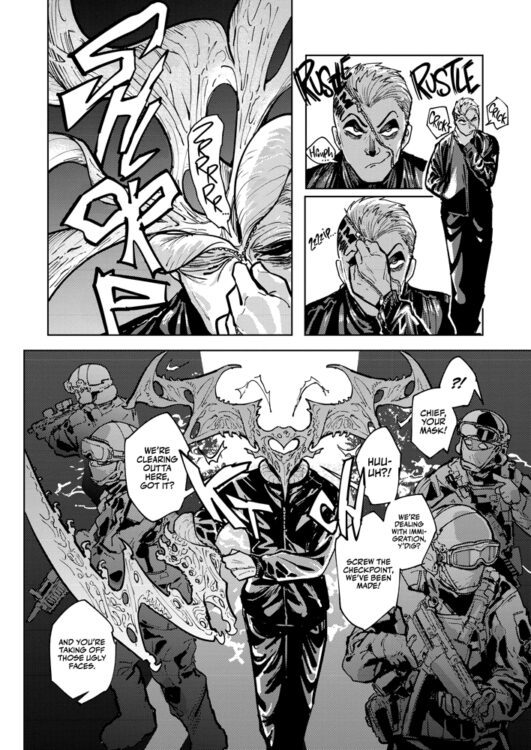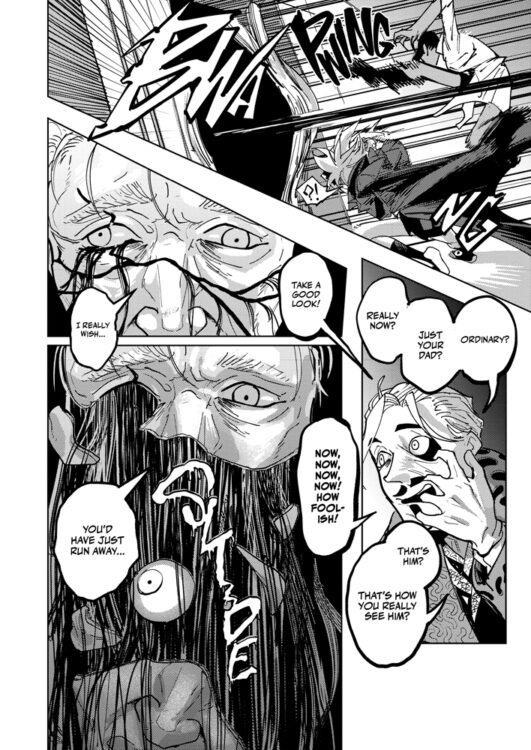Roughly a year after the first volume released, Tokyo Interstellar Immigration is back. Mado Guchimoto’s love-letter to Hollywood, sci-fi, and deep-sea marine life continues mere moments after the first volume ended, with the cast reeling from an appearance by the mysterious “Faceman.” But that doesn’t mean there’s time to rest. The agents have to try and return to their everyday not-so-routine life while the mystery continues to brew in the background.

About Tokyo Interstellar Immigration Vol 2:
Volume 2 of the series finds agents Lein and Ann continuing their tireless work for the Interstellar Immigration Bureau, an organization that stands as the underpaid, overworked last line of defense against all sorts of alien smuggling and kidnapping rings. Not that it was even Lein’s choice to work there; she’s entered a deal to stay the execution of her criminal mentor, Hein, in exchange for her service. Hein, whose severe sentence comes in part from being framed for the destruction of an entire city-block — the true perpetrator of which just showed himself. So the daily missions of the bureau mix with the ever-widening mystery of the alien criminal who goes by the title “Faceman.”
Writing
After the first volume’s relentless pacing and constant attempts to one-up itself with flash and spectacle, this installment settles down a bit to experiment more with what kinds of stories the setting can tell. But that doesn’t mean there’s less Hollywood influence. Stories rely on genre staples that range from a secret livestream snuff channel to a hitman dragged back into in the mob after his attempts to become a family man. There’s even confirmation that one of the characters used to work as a kind of in-universe superhero, and an offhand reference to a character named “Rorschach.” Guchimoto wasn’t kidding about being influenced by Watchmen.
But even while the comic keeps riffing on all sorts of classic sci-fi and crime plots, there’s a definite shift to the more small-scale, and often, sadder stories. The villains of the first volume were running massive operations that bred monsters, unraveled countless innocent civilians into dimensional thread, or compacted an entire apartment complex into “human stew.” Meanwhile, this volume focuses more on single people who get wrapped up in the universe’s seedy underbelly, i.e. a Shrimp Girl getting stuck as a smuggling truck driver, or a young woman finding out about her dad’s past as an assassin.
It’s these characters that get narration boxes or deeper looks into their personal lives (for which translator Andrew Hodgson continues to do an excellent job differentiating character voices), while Lein is often portrayed from an outsider’s perspective. But she still manages to remain the main focus of the series. Tokyo Interstellar Immigration isn’t in a rush to build an exact diagram of how its universe works, or to give each agent a dedicated chapter out of the gate. And don’t expect much motion from the central plotline. It instead tells a few self-contained little stories that each end on a nice character moment for Lein. She may not directly tell the reader her thoughts, but her interactions with different clients slowly build a picture of the person under her stoic façade.

Art
Even a toned-down Tokyo Interstellar Immigration is going to be an ode to excess. Highlights include an alien hivemind of worms, a mantis-man whose head unzips into giant pinschers, and a livestream creating a holographic diagram of a man’s face. The book also gets to play with framing as well, like for a sequence that focuses on jumping from wall to wall as characters chase one another up an endless stairwell. Panels snap between looking up and down the towering structure for maximum dynamic effect, characters blurred to lines of pure motion. The style on display remains one of the series’ strongest aspects, and Guchimoto has certainly not lost his step.

Lettering
But all that stylization and kinetic action means letterer Kalvin Travis has tons of sound-effects to redraw on just about every single page. Most take the form of stylish bubble lettering, bent and broken to match the action on the page. “Vrooooom” will tilt to follow a car across a panel, as “Thud” distorts like it was thrown against a wall alongside the character.
VERDICT
Tokyo Interstellar Immigration Volume 2 lets the series stretch its legs after an intense thrill-ride of a debut. It’s a more crime-noir-tinged outing that keeps Guchimoto’s strong sense of spectacle and enthusiasm. Hopefully it won’t be another year until the next volume. But if the series stays at this level, it’ll be more than worth the wait. Tokyo Interstellar Immigration Volume 2 is available now, so make sure to pick it up at a retailer near you.

